This is Diana's story.
Much as different these two activities are, both are more than just a practise or a hobby for me. They are a way of life, a philosophy, a journey of self-discovery. They are also graceful body movements combined with mind control.
Ever since I started practising yoga, I knew there was something magical about it. It was 2010 when I first came across a yoga class. Since then, yoga has stayed with me like quiet background music. Interesting and soothing, it never left my life. Despite the fact it was difficult for me at the beginning, the curiosity of what yoga is brings me back to the mat every day.
Climbing came much later. The fascination with the mountains led me straight from mountain trails to rock climbing. Climbing and yoga require going beyond the comfort zone, facing your fears and weaknesses.
Yoga is a physical, mental and spiritual practise that originated in ancient India. First codified by the sage Patanjali in his Yoga Sutras about two thousand years ago. This practise was in fact passed down from teacher to student long before this text was written. Traditionally, it was student-teacher work, but since yoga became popular in the West in the 20th century, group classes have become the norm. Popular in our modern culture as a way to promote physical and mental well-being.
The word yoga comes from the Sanskrit root yuj, meaning “yoke” or “to unite”. The practise is aimed at gaining greater awareness by man, connecting the yogi’s mind with his Self by taming unconscious mental impulses. Through practise, the yogi seeks to neutralise ego-driven thoughts and behaviours, creating a sense of spiritual awakening. Bhagavad Gita describes yoga as a journey “myself, to myself and through myself”.
Yoga has been practised for thousands of years, and while many different interpretations and styles have developed, most agree that the ultimate goal of yoga is to achieve liberation from suffering. Although each school or yoga tradition has its own style and practise, most focus on the connection of body, mind and breath as a means of changing energy or shifting consciousness.
The modern understanding of yoga focuses mainly on physical practise. There are many people who only practise asanas (yoga postures) and there is nothing wrong with that. As time passes, practitioners begin to understand themselves more, and thus their awareness awakens, and their goals and priorities change. In the beginning, asana is a solid base, deeper practise usually comes with time.
Asana itself is amazing, but it is not the main focus of yoga practise. The practise of yoga is not only about what happens on the mat but also about what we learn about ourselves, which carries over to the rest of the day. This gives us a deeper understanding of why such a demanding sport as rock climbing is so appealing and how to maintain balance and detachment from success amidst the ups and downs that this sport brings with it.
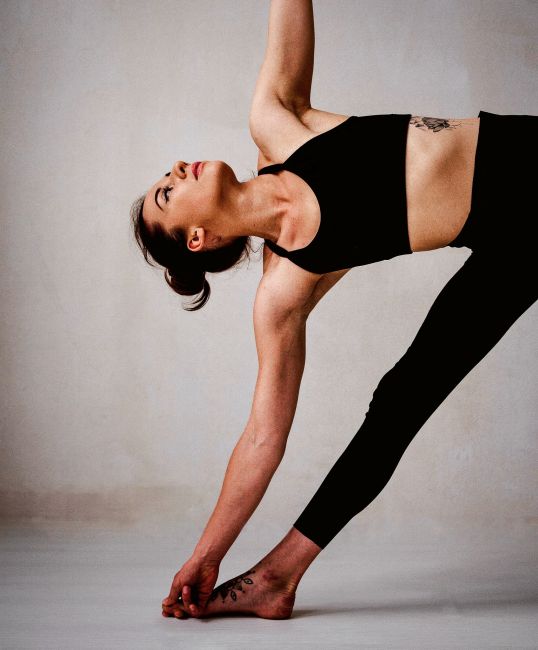
What can yoga do for you?
Yoga certainly has many health benefits. It is a great way to improve flexibility and strength and become more balanced and focused. Regular yoga practise also provides mental clarity and calmness. Techniques that support learning controlled breathing help us live in the present moment. Many climbers are already familiar with the physical benefits of yoga, but many are also beginning to fully understand the need to stay focused and mindful. Climbers who have the ability to control their mind and fears and who know how to work with breath will be able to climb much more difficult routes than people who do not have such a set of skills.
On the other hand, the practise of asanas, yoga poses, increases the flexibility of the body, which helps to keep it healthy. Thanks to this, we can maintain the range of motion in the joints and avoid muscle tension. Stretching is also very effective in removing muscle imbalances, correcting posture, and preventing injuries. Rock climbing is a sport in which we tend to work certain muscle groups repetitively. Asana practise can change the way these muscles are engaged by, among other things, strengthening the antagonistic muscles. The practise of asanas will certainly be a good preventive method to protect against minor and more serious injuries. If one of the muscle groups has already been overloaded, or there is an injury resulting from an accident, a practising yoga climber will be able to return to shape and ability faster.
What distinguishes yoga from ordinary stretching is that a well-balanced yoga practise develops both strength and flexibility of the whole body, additionally engages the core, teaches coordination and balance. Many climbers started practising yoga to recover from an injury and then found it to be an excellent training tool to improve their rock climbing performance.
Yoga also develops body awareness on a deeper level. The practise of observing your own body teaches you when to let go to protect your body from injury and when you can afford more. Thanks to yoga, you will better understand how your body moves in space. You will start noticing nuances like frowning, holding your breath, or clenching your teeth before intense movement.
Yoga helps maintain body mobility and increases overall endurance,which is useful when rock climbing. If you spend too much time in intense activity, your nervous system remains in a state of stress and tension. Bringing the lightness of yoga to your body will help you release and regain your strength.
It is a myth that yoga is about being able to touch your toes or put your leg behind your head. Rather, it is a deep breath that will help us to quiet the mind, calm the nervous system, and work through any distractions that prevent us from achieving peace. It is about knowing yourself deeply.
Think of it more as work in progress rather than training. Even if you are not very flexible, with time and patience you will see improvements in your strength and flexibility. Your joints will move more freely and your muscles will become more flexible, allowing you to reach further, climb higher, and twist your hips more easily.
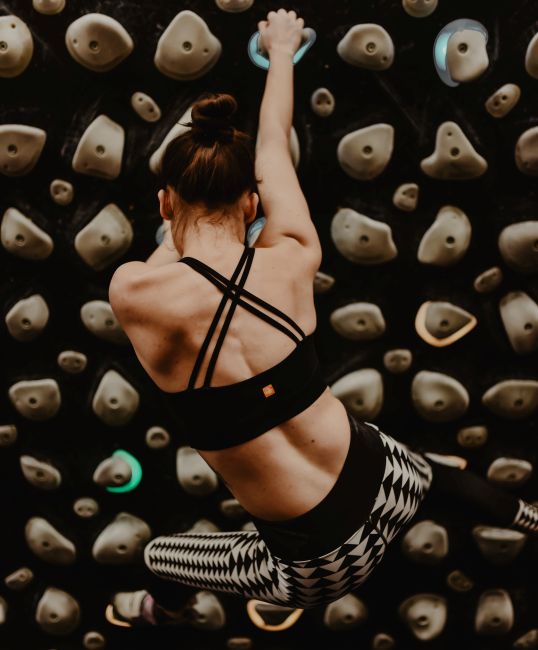
Modern yoga, whose father is believed to be Sri Tirumalai Krishnamacharya, has been designed to suit the modern man. You can always adjust the positions to how your body feels on a given day. There is no correlation between how difficult a pose you do and whether you are “good” at yoga. This can be a novelty for a climber who determines his level based on the “number” he is able to pass. In yoga, the physical level does not define whether we are good yogis. If we looked at yoga only from the physical point of view, it could be said that every person who is professionally engaged in rhythmic gymnastics or is a circus performer is automatically an enlightened person. Of course she / he is not.
As you get more comfortable with yoga practise, you can explore more challenging poses. It is definitely motivating. Observing the progress certainly gives the feeling that our work is not in vain and brings results. More difficult positions will also bring us much more joy over time. Just like in rock climbing, when suddenly an impossible move, after a few, sometimes even many attempts, becomes feasible for us.
Our ego in a sport like climbing can often be a limiting factor. It can be both a cause of limitation on the mental and physical level. Too high expectations and the pressure we put on ourselves can block us from achieving the set goal. This may be due to perfectionism, too ambitious approach to our passion, comparing ourselves to others. Although we love climbing and it is often hard for us to imagine our lives without it, it can become a cause of sadness, uncertainty or disappointment.
On a physical level, our ego pushes us straight into injury by ignoring the body’s signals. Through yoga, we learn to tame our ego.
By honing your body awareness and listening to what is good and right for you, you will learn to let go, not to judge yourself and others. It is important to understand that everyone starts somewhere, everyone has a different body, different predispositions and different sports experiences. Daily yoga practice teaches that every day is different and our body can feel different every day. It will be influenced by what we ate the day before, how we spent the day before the practice, what our sleep looked like and finally, how much stress accompanies us in a given period. This observation of the variation of form on the mat translates one to one into how you feel while climbing. One day you may feel that you are in great shape and your project will be successful, on other days, despite the enormity of effort, your body will need a little more rest and letting go. It is then worth adjusting the training to the signals coming from our body so as to detect the factors leading to injury at an early stage.
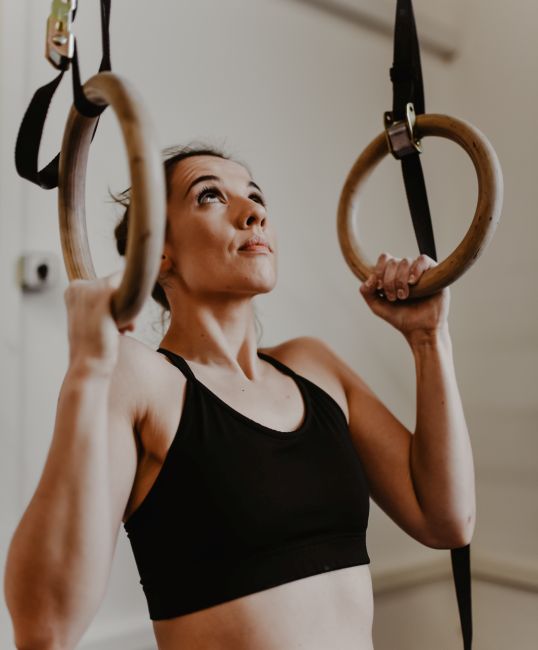
For a person facing the fear of heights, fear of space, who at the same time practices quite an extreme sport, which is climbing, having a set of techniques to calm the mind is crucial.
Climbing taught me how to use fear as a transformation tool. Fear can either paralyse and weaken our own individual or drive us towards action and willingness and while trying. Fear from falling or control loss, is what brings yoga closer to climbing. Ashtanga yoga practitioners find it difficult to complete the practice with a wandering mind because Ashtanga yoga practice is arranged in a special sequence that requires focusing on a specific asana progression. During practice, we also focus on breathing, counting vinyas, drishti - the result that we observe with our eyesight. Balance positions, on the other hand, require full adjustment, control and focus from us to check ourselves before falling. Whereas the climber must be in one-point assist state (dharana) to get to the top without falling. Mastering the fear and adrenaline, with the constant movement and flowing breath while moving across the rock and the lines between passeges, requires sustained and uninterrupted focus.
Many climbers forget how important breathing is when climbing. The breathing techniques taught in yoga can help you maintain balanced breathing and avoid air retention during intense concentration or physical exertion.
Mental focus and calm are the keys to pushing boundaries and becoming stronger. The eight-pointed path of yoga outlined in Patanjali's Yoga Sutras is a guide that offers yogic wisdom towards leading a meaningful and purposeful life. Think of it as a roadmap for how you approach every aspect of your life—whether it is climbing, an upcoming project at work, or your relationships with other people.
Yoga leads through the universal principles of ethics - Yama, the principles of self-care - Niyama, the practice of yoga postures - Asana, the experience of breath control - Pranayama, the withdrawal of the senses - Pratyahara, concentration - Dharana, meditation - Dhyana to complete absorption of samadhi, which intersect and overlap in a harmonious, non-linear process. Before we climb, my partner and I always need to be focused and prepared. We must confirm that the rope is properly tied, passes properly through the belay device which is secured with a twisted carabiner, harnesses are securely put on and fastened. This is an important moment that requires a lot of mindfulness and focus. Falling into a routine and not concentrating on these few pre-climbing activities can cost you health and even life. As I start to climb, my senses begin to sharpen. As I climb higher, the voices of the climbers at the base of the rock fade away. Then I know that I will not hear any hints, prompts and everything depends only on me. From time to time I hear the flapping of birds' wings or the rustling of insects on a rock. My vision becomes sharper. Each hold becomes a study of texture - granite, sandstone or limestone - instructing me how to position my body for balance.
Several metres above the ground, you look down. The ground is far away and fear is rising. When you're at the limit, your muscles start to twitch. Blood begins to circulate faster in your forearms. The pulse pulses in each fingertip.
The paradox is that I climb despite fear. Climbing expeditions are rarely holidays in the common sense. For me, a climbing trip is rather a battlefield where I can face my fears and weaknesses, trying to tame my restless mind.
The secret is breathing. Moving precisely, purposefully. Directing your full attention to the interception from one hold to another. The secret to rock climbing is discipline and mindfulness. Just like yoga practice.
Both yoga and climbing gave me the strength to trust myself, my mind, my body and ultimately others. While my attitude towards both of these activities has changed over the years, the work remains the same: maintaining and expanding focused states of consciousness where no pain, sound, emotion or distraction can interfere. When we approach both with humility and respect, they can show us the subtle workings of our mind.






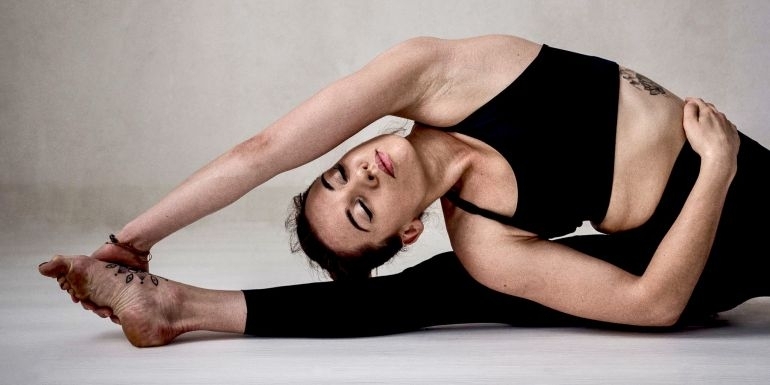
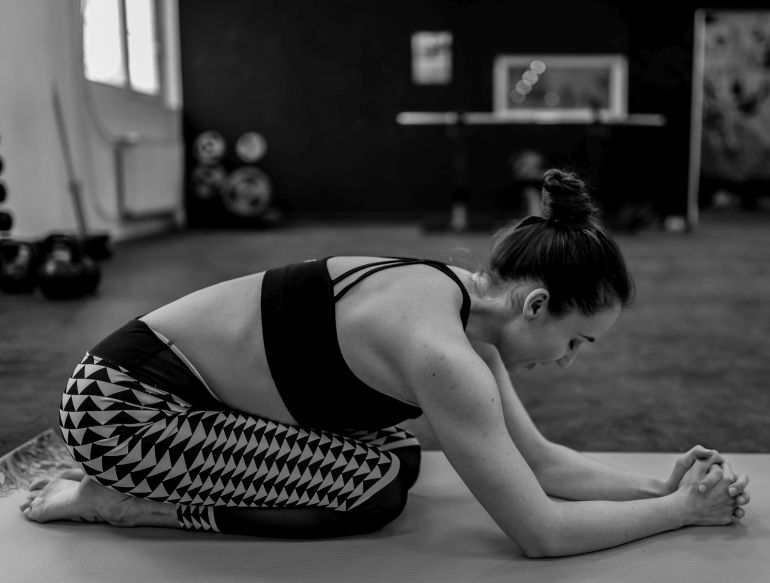
Leave a Reply Cancel Reply